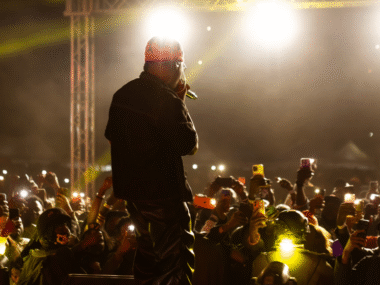Isn’t It Time We Rethink the One-Off Creator Deal?
In 2013, Issa Rae signed a deal that meant she didn’t own Insecure. In 2025, she owns the ecosystem around it, production, music, events, brand partnerships, even product lines.
In 2021, MI Abaga stopped showing up as just talent. He began structuring his influence, building civic-facing platforms, managing partnerships with purpose, and backing it all with operational infrastructure.
Both moves show the same principle at work: creators who are discerning recognize their brands for what they really are. They are systems powered by their influence and well organised and funded are a value gold mine. But the brand-creator model hasn’t caught up. Too often, creators are brought in late, used briefly, and exited early. The result? Campaigns with flash but no staying power, equaling ROI nightmares and creators stuck chasing the next contract instead of building real equity and in a couple of years, with no real bargaining chip to stay relevant.
But here is the catch, and the devil is always in the details.
The gap isn’t just ideological, it’s operational.
On one hand, you have structured ecosystems like brand and agency teams, driven by KPIs, timelines, and reporting cycles. These environments thrive on briefs, spreadsheets, review loops, and measurable outcomes. Creativity here must land on a calendar, align with strategy, and justify budgets. It’s efficient—but often stifling.
On the other hand are creators, powerful engines of cultural influence who thrive in looser formats, with ideas sparked by instinct, not timelines. The result is sometimes brilliance, sometimes delay, and often a tension between what looks good and what works. When metrics like engagement and reach are all that’s measured, it’s easy to mistake visibility for value.
The mismatch is real. Creators often struggle with the “boring but essential” backend; admin, contracts, budgeting, deliverables, follow-ups. Many are hard to reach, hard to brief, and harder still to manage in a corporate environment that needs structure to justify spend. Meanwhile, brands rush through campaigns hoping for the best, treating creator engagement as a checkbox rather than a relationship. So we have a dilemma.
One we must fix quickly to fully extract the gains of a rising creative influence in Nigeria and globally.
We are entering a new era, one where the most valuable creators aren’t just visible, they are viable. Think of Aproko Doctor, who turned trust into a health-tech startup. Think of creators with the systems, support, and clarity to partner long-term. Then imagine what a brand plugged long-term into a partnership or co-creating with influence will create in our world.
This must become the goal. To start to connect early, to co-design around mutual interests and to build systems that scale results as influence scales. This is the new brand-creator ambassadorship model. For brands to find something more powerful than the right face for a campaign and instead, the right partner for a movement – whether it is to sell soap or new technology.
Do you want to chat about how we can re-imagine your brand-creator frameworks, click here to contact TTA

